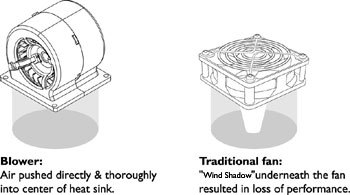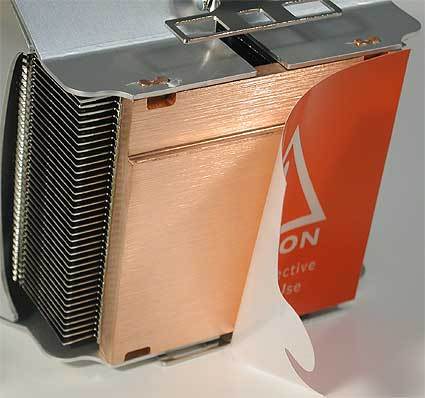Three Red-Hot Boxed Cooler Alternatives for the Athlon XP3200+
Coolers For PC Pilots: Coolermaster Jet 7, Continued
The radial fan, the so-called blower, takes the form of a fan cylinder. This sucks in the air and blows it directly at the cooling element at a 90° angle difference.
As a result, the center under the fan is surrounded with cool air. Compared to a design with a conventional radial fan, this should produce more efficient CPU cooling.
The heat sink consists of a base plate of heavy copper onto which the aluminum fins were welded. It has been our experience that this method of connection obtains higher thermal resistances than with heat sinks where base plate and fins are connected by crimping.
Thanks to the ergonomic triple clip, no tools are needed for installation.
The underside of the Jet 7 hasn't been completely smoothed over. However, the visible "unevenness" of the surface doesn't have a negative effect on the cooler's thermal conductivity since the thermal grease nestles evenly in the ridges.
The fan speed can be set to anywhere from 1900 to 3500 rpm. Ratcheting up the fan speed will increase cooling performance - and the noise level. The thermal resistance of the cooler fluctuated between 0.61 °C/W and 0.49 °C/W; the die temperatures stayed between 59°C and 51°C.
The noise level ranged from 62 dB(A) and 44 dB(A). The background noise was 34dB(A)). All in all, the Jet 7 is an average, but good cooler. But what stands out about this product is the unusual design.
Get Tom's Hardware's best news and in-depth reviews, straight to your inbox.
Current page: Coolers For PC Pilots: Coolermaster Jet 7, Continued
Prev Page Coolers For PC Pilots: Coolermaster Jet 7, Continued Next Page The Name Says It All: Kamakaze From Scythe
